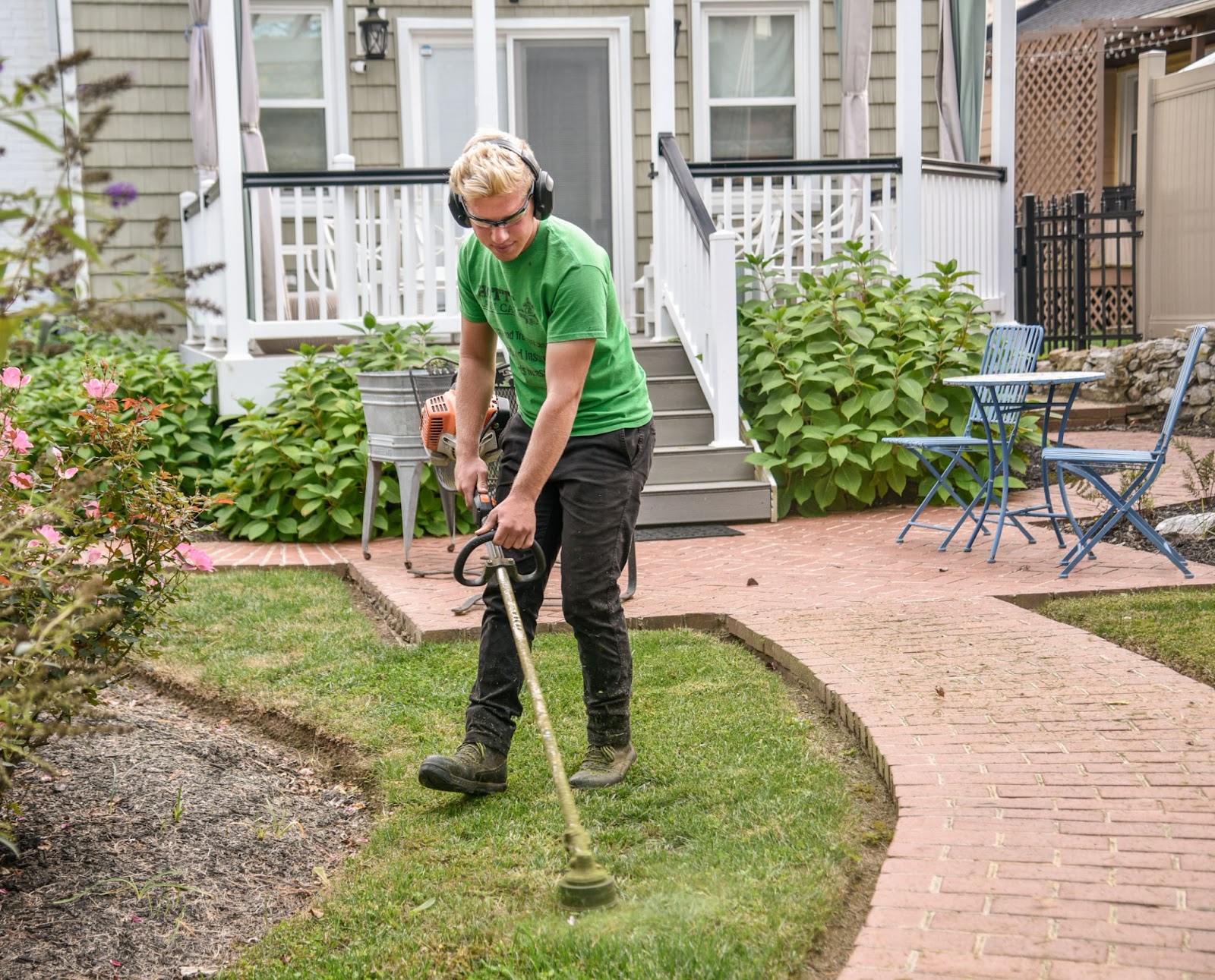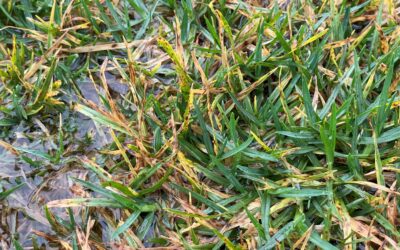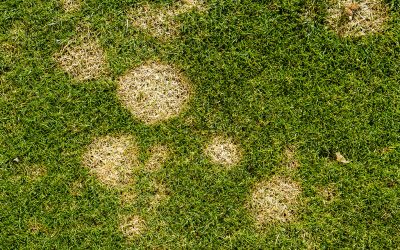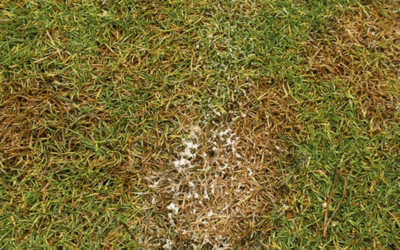Diseases in your lawn are frustrating and unsightly. They’re the last thing you want to see as you prepare for pool parties or other outdoor activities. After all, you’ve invested time and energy into your lawn, and you want it to look good.
Left untreated or with no change in what causes them, lawn diseases like commonly occurring brown patch tend to get worse as time goes by. Fortunately, with ongoing special care, you can eliminate the infection and prevent it more in the future.
What is Brown Patch?
Brown patch is a common lawn disease caused by fungus. Known as a foliar disease, it affects the blades of grass, which become weak and wilted. As the fungus grows, circular brown areas form in the turf. These sections of the lawn may also appear matted or sunken.
How to Identify a Brown Patch?
The most obvious way to identify brown patch disease is by the unsightly brown and dead patches on the lawn. They can vary in size from 20 cm to a metre across, although the size varies depending on what causes them. The patches are usually roundish and can be edged by darker green on the outside, although patches of good grass with rings of thin or dead grass around them may also occur.
It is important to note that there are other causes of discolouration in your lawn, and it may be worthwhile to confirm that these spots are not caused by generally poor lawn maintenance.
How To Treat Brown Patch Disease
If brown patch disease already exists in your lawn, getting your hands on a high-quality fungicide is essential. Speak to a professional about the most appropriate way to apply these chemicals, and review your current lawn maintenance routine to prevent a recurrence.
Basics for Preventing Brown Patches on Lawn
The fungus may be dormant in the warmer summer months. So, it’s more important than ever that you create an inhospitable environment for brown patches on lawn areas. Take special care to ensure that you’re helping the lawn absorb nutrients, oxygen, and water.
Water on Schedule
You should water your lawn regularly to avoid brown patches on lawn areas. The best time is early in the morning, so the soil has time to absorb the water before warm air or hot sun can evaporate it. If possible, focus on watering lawn areas between 5 am and 9 am, even though it may be more convenient to water later in the day, after work. If possible, use less water as unabsorbed water can encourage fungal growth.
Mow High
Mow your lawn regularly, but avoid mowing too low. When you cut your grass too close to the ground, you risk contributing to the onset of fungus and the appearance of brown spots on your lawn. Plus, the soil doesn’t benefit from the shade of the grass, which can reduce water evaporation and decrease the need for water.
Reduce Heavy Thatch
Heavy thatch has much the same effect as a pile of leaves, other yard debris, or discarded materials. You need to avoid these situations because they are the perfect environments to support the growth and spread of the fungus. As an effective preventative solution, you can aerate your lawn in the early fall or late summer. Soil aeration — creating narrow holes in the turf and soil — will help ensure your lawn can absorb nutrients, oxygen, and water more effectively while avoiding the risk of fungus and brown spots.
Avoid Excessive Use of Nitrogen Fertiliser
If you use too much nitrogen fertiliser during the summer, you’re potentially increasing the risk of disease. Nitrogen-heavy fertiliser encourages fungus to grow and spread more quickly, which is excellent for brown spots but not so great for you.
Ensure Proper Drainage
Standing water on your lawn will contribute to the spread of fungus and other diseases, which is why drainage is essential. Good core aeration and soil compaction will ensure there is proper moisture in your lawn.
Test the Soil
To ensure your lawn is as healthy as possible, test your soil regularly and adjust as necessary. Apply lime, if needed, to get to the recommended pH balance.
Summary
Brown patch disease leads to ugly, unhealthy grass. Fortunately, You can treat this with a bit of extra care and the appropriate fungicide. Learn more about Brown Patch Disease and other causes of lawn discolouration; contact The Lawn Shed today.
Frequently Asked Questions
To better understand the health of your lawn and how to prevent brown spots, here are a few frequently asked questions.
Why are there brown patches on my lawn?
The brown spots on your lawn are often caused by a fungus that makes your once-healthy grass develop brown spots in circular and irregular shapes on your property. However, they may also be caused by inadequate nutrients, too much nitrogen, or other issues.
How do I treat brown patch disease?
You can use treatments to repair the brown spots in your lawn and get rid of the effects of the disease, but we don’t recommend grabbing a bottle of chemicals straight away. The best way to treat brown spots on your lawn is to remove the cause through the use of fungicides. Improve drainage, mow to the proper level, fertilise only as necessary, reduce heavy thatch and debris buildup, and keep the pH level balanced.
How do dark green circles in your grass differ from the brown spots?
The dark green circles are often caused by mushrooms feeding under the lawn. These are sometimes called fairy rings. Fortunately, while aesthetically unpleasing, they do no damage to the turf itself. Regular maintenance, including aeration and removal of thatch, will be enough for these rings to disappear.
Why do you see brown patch disease on your lawn in the spring?
Brown patches on your lawn can worsen when the weather gets hotter and more humid. You’ll see the appearance in the late spring, summer, or even in the early fall seasons of the year.




